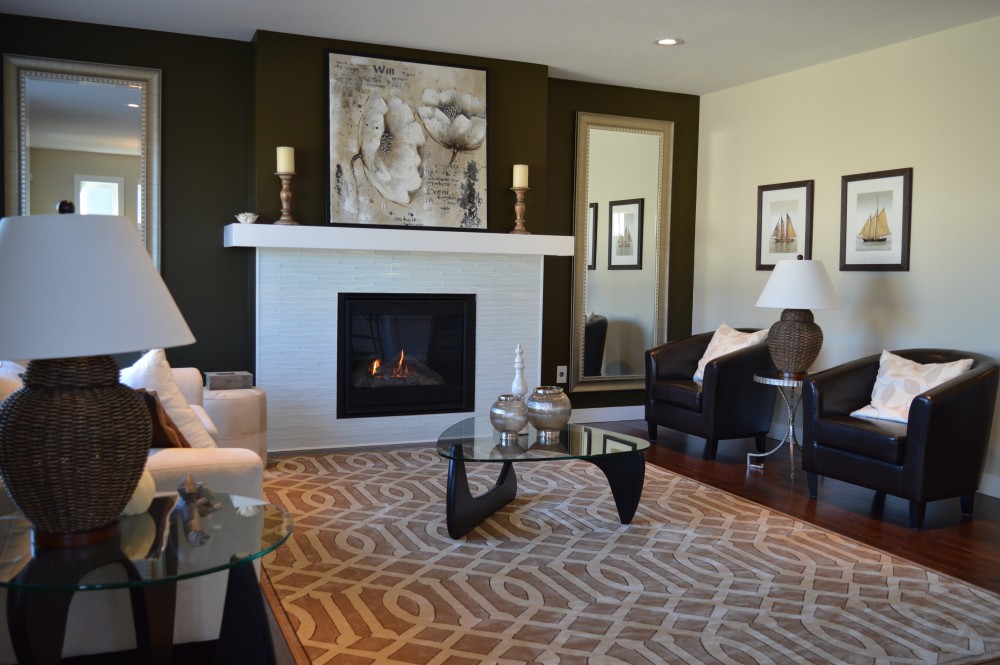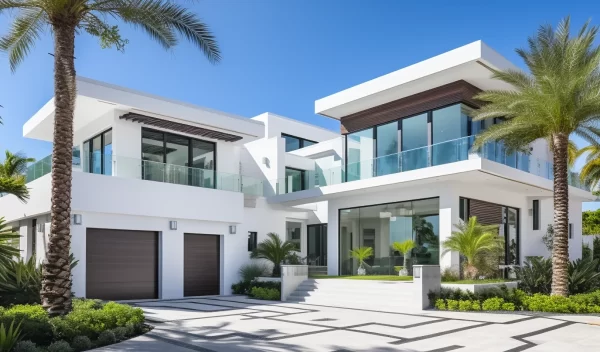
February 25, 2015
Colours Decorating IdeasAn accent wall is one which has an alternate design to the other walls in a particular space. This can be achieved in a few ways. Typically contrasting paint colours are used to enhance a room’s allure. Likewise, patterns or textured finishes may be juxtaposed against solid backgrounds to create an eye catching effect. The addition of an accent wall in any décor is an ideal way to avoid overwhelming a room with bold colours while maintaining visual interest.
Deciding Where
The primary function of an accent wall should be considered when deciding which wall will gain special status. The shape and structure of the room will be of utmost importance. In homes with an open floor plan the accent wall may extend from one area to the next if no natural architectural breaks exist in the space. This would mean that the colour must blend seamlessly with the overall décor in this space. If, for example, the space encompasses the dining area and living room and it is rectangular you may opt to make the wall adjacent to the shared wall space the accent wall – as seen in the illustration below. This ensures that it is confined to a much smaller area which guarantees it will have even greater visual impact. Additionally this is likely the wall that one sees as soon as they enter the room which improves the effect.
The position of the accent wall can also be determined by a particular piece of furniture. In the bedroom the accent wall is best placed behind the headboard to empahsize its beauty. In the living room an accent wall can accompany any feature that elicits great appeal, this could be a striking sofa, an elegant french window, an antique writing table or any other outstanding piece of furniture you would like to highlight. The key is to accentuate the best qualities of a room.
Determining Impact
The impact of the accent wall will largely depend on the number of items set against it or placed on it. This means that if the accent wall were used to highlight a window, it would appear less dazzling if excessive drapery covered it. Likewise the overuse of framed photographs or paintings may decrease the possible impact it may have. On the other hand, the accent wall may look out of place if it is not anchored by a piece of furnishing or an architectural element.
Deriving Colour
Choosing the most appropriate colour for an accent wall will depend on the lighting in the room, the atmosphere you would like to create and the overall effect you would like it to have. Do not simply rely on trends to determine the colour you will choose and ensure that your accent wall is a reflection of your personal tastes.If the intent is to keep the wall dramatic, then vibrant colours will be essential to the décor. This could mean opting for lively reds, brilliant yellows, stunning purples or outstanding oranges. For rooms that are meant to have a more subdued effect then soothing blues, earthy browns and inviting greens are always safe options. If the room will not get much natural light be sure that the accent wall colour will still have an impact under artificial lighting.
Natural lighting will make the colour appear warmer and thus more vibrant. Fluorescent lighting will bring out the blueish tones beneath any hue and can make the room seem cooler. Incandescent lighting has a similar effect as natural lighting and will make the colour seem warmer. With this in mind, it is best to tone down the colours orange or yellow in a room that is exposed to a great deal of natural light and heat to avoid amplifying this effect.
The aim should be to create balance while advancing impact. Let the natural feel of the room help determine how your personal colour choice should be expressed.











